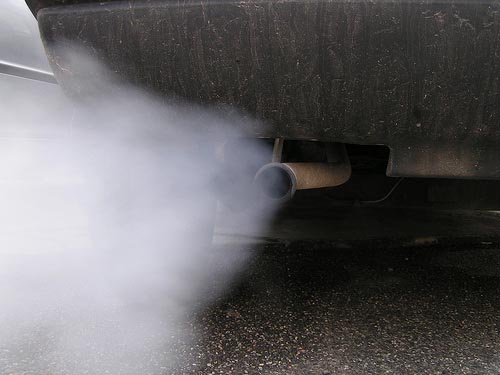The official press release from the European Union sounds as though Wednesday's vote on new emission-testing rules makes it tougher for automakers to cheat as Volkswagen admitted doing with its 2.0-liter diesel engines.
Indeed, the new rules add on-road tests of emissions in real-world driving to those tests performed in laboratories on dynamometers, or "rolling roads," which are widely acknowledged to be unrealistic--and easy to game.
But the EU also gave automakers more leeway to exceed the legal limits for nitrogen oxides than the makers said would be necessary.
DON'T MISS: Are 'Clean Diesels' Actually Not Nearly As Clean As Claimed? (Apr 2015)
The permission to exceed legal limits is what the EU euphemistically calls a "discrepancy in conformity factor," a polite way of saying by how much carmakers can exceed the limits on NOx and other emissions and for how long.
The EU press release notes that starting in September 2017, makers of newly-released vehicles must "bring down the discrepancy to a conformity factor of maximum 2.1"--with that limit to apply to every vehicle certified two years later.
Then, in January 2020, that will tighten to a conformity factor of 1.5 for new vehicles--which will apply to all vehicles starting in January 2021.
![Consumer Reports tests 2015 Volkswagen Jetta TDI diesel in 'cheat mode,' October 2015 [video frame] Consumer Reports tests 2015 Volkswagen Jetta TDI diesel in 'cheat mode,' October 2015 [video frame]](https://images.hgmsites.net/lrg/consumer-reports-tests-2015-volkswagen-jetta-tdi-diesel-in-cheat-mode-october-2015-video-frame_100530187_l.jpg)
Consumer Reports tests 2015 Volkswagen Jetta TDI diesel in 'cheat mode,' October 2015 [video frame]
In other words, new cars can emit 110 percent more pollutants than the legal limits under the real-world tests that are being added--for the next five years.
That's higher than the 70-percent increase in permissible NOx levels that the automakers themselves had said earlier this month would be required for them to comply with new tests.
After that, all vehicles can emit 50 percent more than the mandated limits, indefinitely.
ALSO SEE: European Makers: NOx Limits Must Rise For Real-World Emissions Tests
European media coverage of the new regulations ranged from neutral to astonished.
The usually sober Financial Times ran a headline in its print edition saying the announcement "waters down [the] car emissions test framework" despite tougher rules in the U.S.

Tailpipe Emissions
The action, it wrote, had "unexpectedly granted carmakers additional leeway to bust EU rules on harmful emissions."
The rules, the FT said, were "confounding expectations that [regulators] would agree to a tight framework" for emission testing, following the global reverberations of the Volkswagen diesel-cheating scandal.
Reuters said that the rules "diluted a proposal from the European Commission, the EU executive, after many of the 28 member states demanded leeway to protect the car industry."
Only the Netherlands, alone among the 28 members states of the European Union, voted against the revised rules, according to multiple sources.
The FT's conclusion: "The move will increase perceptions that the EU takes the emissions issue less seriously than the U.S."
_______________________________________













